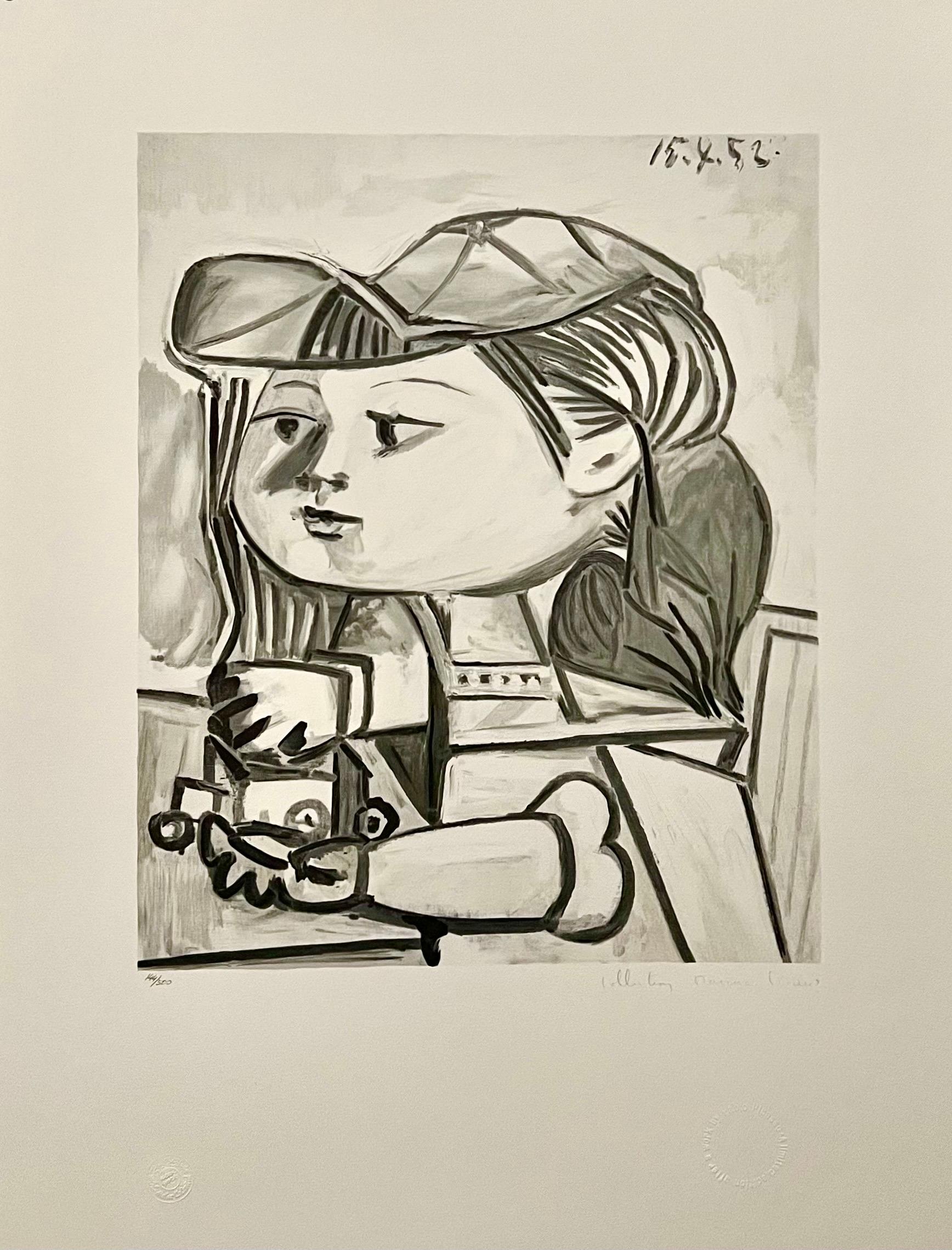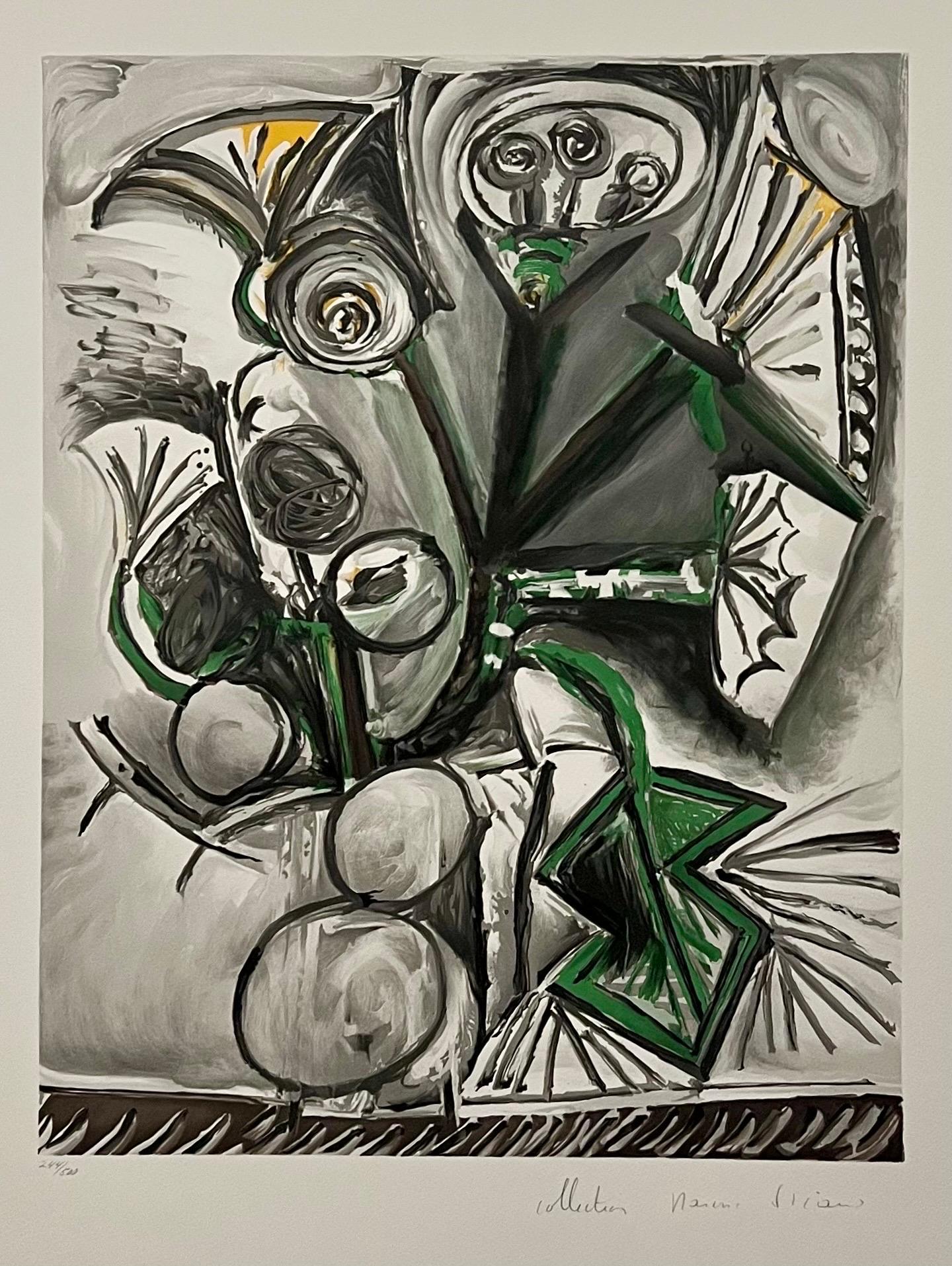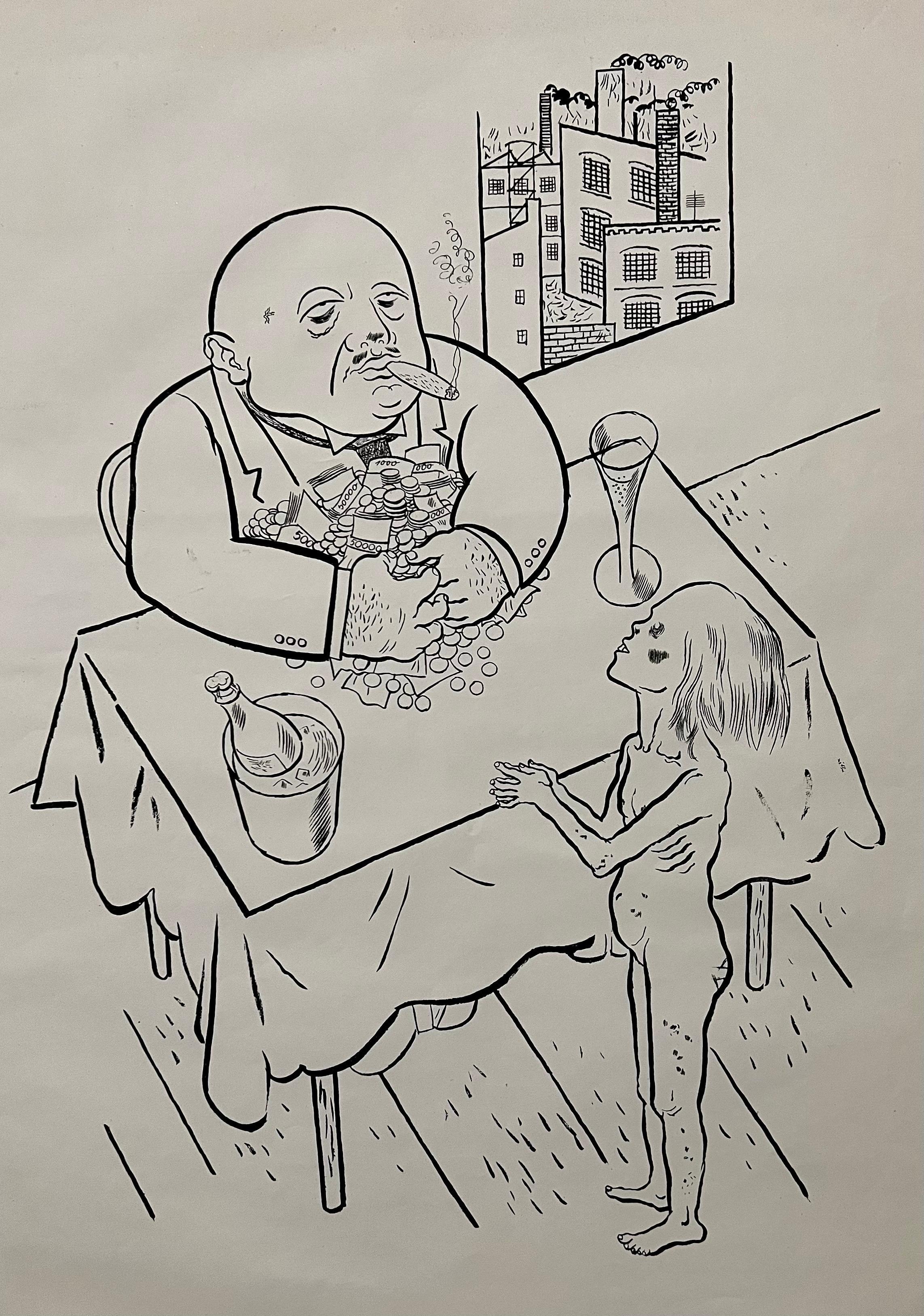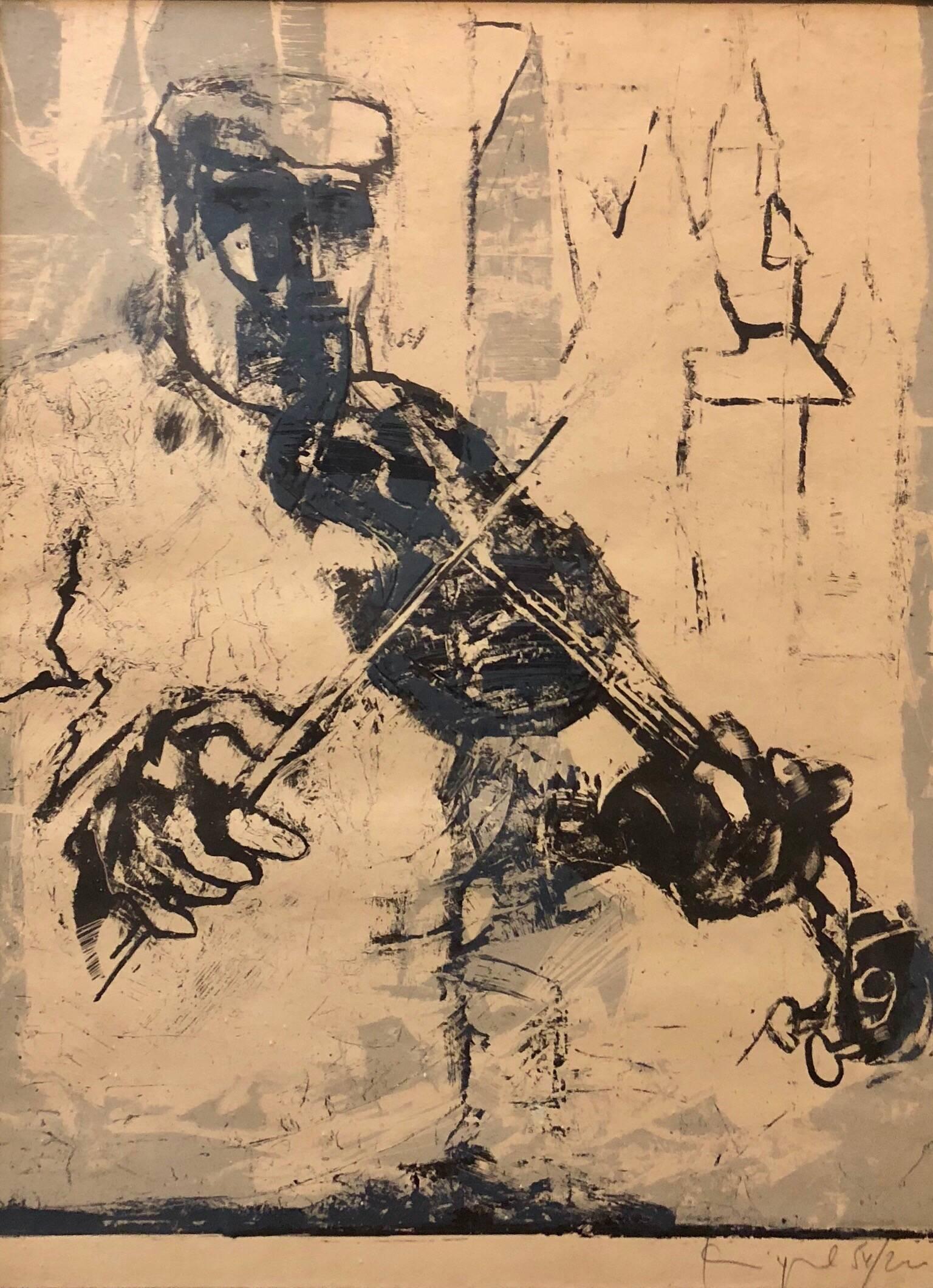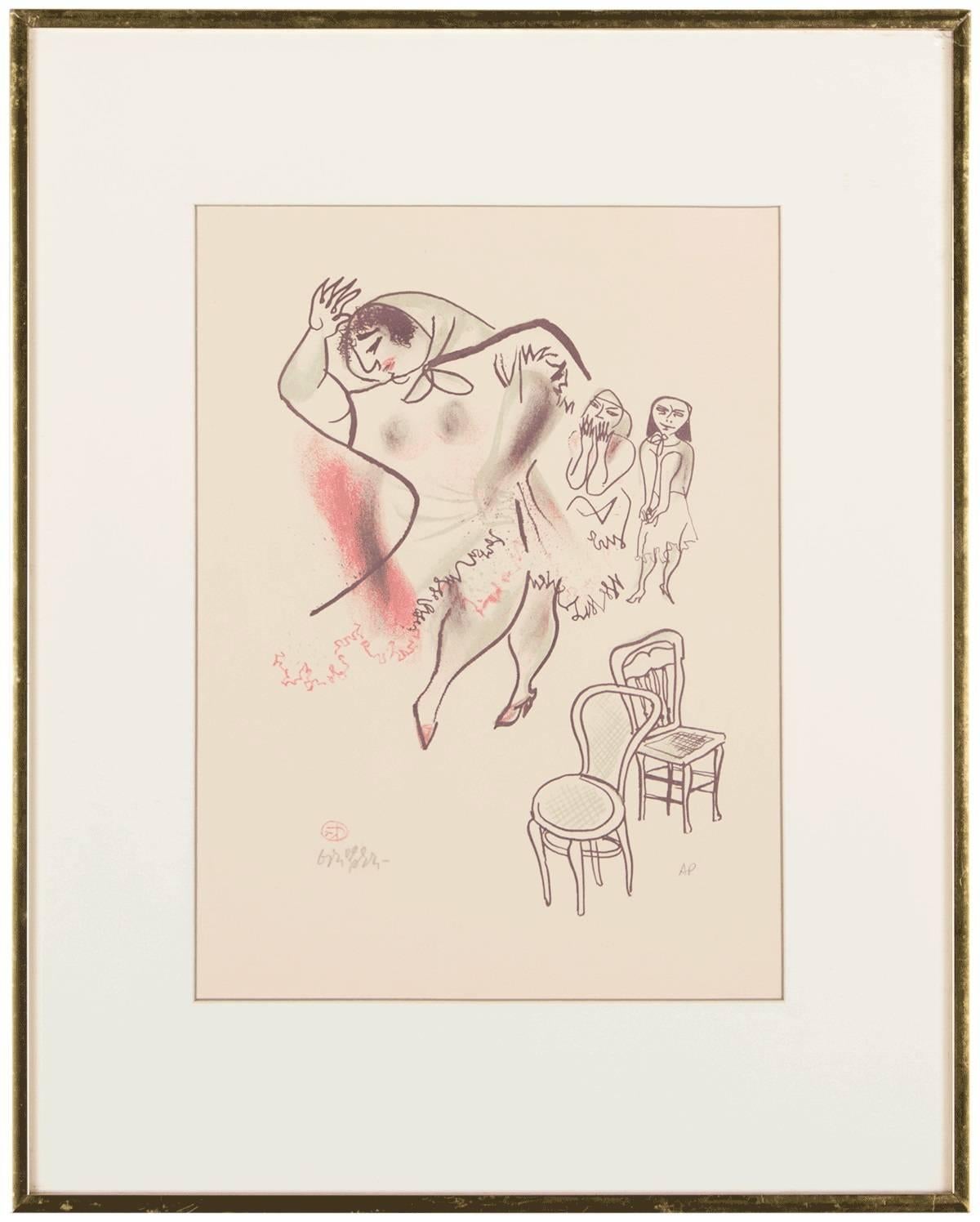Items Similar to Costume - Original Hand-colored Lithograph - 19th Century
Want more images or videos?
Request additional images or videos from the seller
1 of 2
UnknownCostume - Original Hand-colored Lithograph - 19th Century19th century
19th century
About the Item
Costume is original Hand-colored lithography realized by an Anonymous artist in the late XIX century.
Included a Passepartout: 52.5 x 37cm.
Very good conditions.
The artwork represents the traditional costume, skillfully depicted through soft and precise strokes, the artwork is created with congruous harmonious colors from historical costume evidence.
- Creation Year:19th century
- Dimensions:Height: 13.78 in (35 cm)Width: 9.85 in (25 cm)Depth: 0.04 in (1 mm)
- Medium:
- Period:
- Framing:Framing Options Available
- Condition:Insurance may be requested by customers as additional service, contact us for more information.
- Gallery Location:Roma, IT
- Reference Number:
About the Seller
4.9
Platinum Seller
These expertly vetted sellers are 1stDibs' most experienced sellers and are rated highest by our customers.
1stDibs seller since 2017
6,757 sales on 1stDibs
Typical response time: 2 hours
- ShippingRetrieving quote...Ships From: Monaco, Monaco
- Return PolicyA return for this item may be initiated within 14 days of delivery.
More From This SellerView All
- The Escape from Argyle Castle - lithograph by Richard Parks Bonington - 1826Located in Roma, ITThe Escape from Argyle Castle is original lithograph on paper, realized by the artist Richard Parkes Bonington (1802- 1828) Signed on the plate on the lower left and titled. Editor ...Category
1820s Modern Figurative Prints
MaterialsLithograph
- Insects - Pair of Original Lithographs by Emil Hochdanz- 1868-1869By Emil HochdanzLocated in Roma, ITInsect is an original pair of modern artwork realized in 1868-1869 by the German atist E. Hochdanz Hand watercolored lithograph. Printed on plate of both artworks: Art Anst.v E.Ho...Category
1860s Modern Animal Prints
MaterialsLithograph
- Flora and Fauna - Pair of Original Lithographs by Emil Hochdanz- 1869By Emil HochdanzLocated in Roma, ITFlora and fauna is an original pair of modern artwork realized in 1869 by the German atist E. Hochdanz. Hand watercolored lithograph. Printed on plate of both artworks: Art Anst.v ...Category
1860s Modern Animal Prints
MaterialsLithograph
- Insects - Pair of Original Lithographs by Emil Hochdanz- 1868By Emil HochdanzLocated in Roma, ITInsect is an original pair of modern artwork realized in 1868 by the German atist E. Hochdanz Hand watercolored lithograph. Printed on plate of both artworks: Art Anst.v E.Hochdan...Category
1860s Modern Animal Prints
MaterialsLithograph
- The Battle - Original lithograph by Richard Parks Bonington - Early 19th CenturyLocated in Roma, ITThe Battle is original lithograph "d'après" drawing of F.A. Pernot, realized by the artist Richard Parkes Bonington (1802- 1828) Signed on the plate on the lower left. Printed by V...Category
Early 19th Century Modern Figurative Prints
MaterialsLithograph
- A Duel Between Frank and Rashleigh -Lithograph by Richard Parks Bonington - 1828Located in Roma, ITA Duel between Frank and Rashleigh is original lithograph on china glued, realized by the artist Richard Parkes Bonington (1802- 1828) Signed on the plate on the lower left and titl...Category
1820s Modern Figurative Prints
MaterialsLithograph
You May Also Like
- Pablo Picasso Estate Hand Signed Cubist Lithograph Abstract Girl Portrait TeteBy (after) Pablo PicassoLocated in Surfside, FLPablo Picasso (after) "Buste de Petite Fille" limited edition print on Arches paper, Hand signed by Marina Picasso lower right and numbered 144/500 lower left From the estate of Pa...Category
20th Century Modern Abstract Prints
MaterialsLithograph
- Pablo Picasso Estate Hand Signed Cubist Lithograph Abstract Flowers BouquetBy (after) Pablo PicassoLocated in Surfside, FLPablo Picasso (after) "Le Bouquet" Bouquet of flowers, abstract floral arrangement. limited edition print on Arches paper, Hand signed by Marina Picasso lower right and numbered 244...Category
20th Century Modern Abstract Prints
MaterialsLithograph
- Large George Grosz 1923 Lithograph Die Rauber German Expressionism WPA RealismBy George GroszLocated in Surfside, FLFrom The robbers. lithographs by George Grosz for the drama of the same name. photolithography on laid paper. 19 X 25.5 inches (sheet size). This is not hand signed or numbered in ...Category
1930s American Modern Figurative Prints
MaterialsLithograph
- Shtetl Musician (Klezmer Playing the Violin, Sholem Aleichem)By Gershon KnispelLocated in Surfside, FLShtetl Klezmer Violinist GERSHON KNISPEL Cologne, Germany (Haifa, Israel - Sao Paulo, Brazil), b. 1932 Gershon Knispel was born in Cologne, Germany in 1932. Within a year of his bir...Category
20th Century Modern Figurative Prints
MaterialsLithograph
- 1971 Modernist Lithograph Redhead Pop Art Mod Fashionable Woman Richard LindnerBy Richard LindnerLocated in Surfside, FLRICHARD LINDNER (American. 1901-1978) Hand Signed limited edition lithograph with blindstamp Publisher: Shorewood-Bank Street Atelier for the Skowhegan School of Painting and Sculpture 29.25 X 22 inches Richard Lindner was born in Hamburg, Germany. In 1905 the family moved to Nuremberg, where Lindner's mother was owner of a custom-fitting corset business and Richard Lindner grew up and studied at the Kunstgewerbeschule (Arts and Crafts School since 1940 Academy of Fine Arts). From 1924 to 1927 he lived in Munich and studied there from 1925 at the Kunstakademie. In 1927 he moved to Berlin and stayed there until 1928, when he returned to Munich to become art director of a publishing firm. He remained there until 1933, when he was forced to flee to Paris, where he became politically engaged, sought contact with French artists and earned his living as a commercial artist. He was interned when the war broke out in 1939 and later served in the French Army. In 1941 he went to the United States and worked in New York City as an illustrator of books and magazines (Vogue, Fortune and Harper's Bazaar). He began painting seriously in 1952, holding his first one-man exhibit in 1954. His style blends a mechanistic cubism with personal images and haunting symbolism. LIndner maintained contact with the emigre community including New York artists and German emigrants (Albert Einstein, Marlene Dietrich, Saul Steinberg). Though he became a United States citizen in 1948, Lindner considered himself a New Yorker, but not a true American. However, over the course of time, his continental circus women became New York City streetwalkers. New York police uniforms replaced European military uniforms as symbols of authority.At a time when Abstract Expressionism was all the rage, Lindner’s painting went against the current and always kept its distance. His pictorial language of vibrant colours and broad planes of colour and his urban themes make him a forerunner of American Pop Art. At the same time, he owes the critical tone of his paintings to the influence of European art movements such as Neue Sachlichkeit and Dada. His first exhibition did not take place until 1954, by which time he was over fifty, and, interestingly, it was held at the Betty Parsons Gallery in New York, a venue associated with the American Expressionists. From 1952 he taught at the Pratt Institute, Brooklyn, from 1967 at Yale University School of Art and Architecture, New Haven. In 1957 Lindner got the William and Norma Copley Foundation-Award. In 1965 he became Guest Professor at the Akademie für Bildende Künste, Hamburg. His Ice (1966, Whitney Museum of American Art) established a connection between the metaphysical tradition and pop art. He did work on Rowlux which was used by a number of pop artists (most notably Roy Lichtenstein)The painting shows harsh, flat geometric shapes framing an erotic but mechanical robot-woman. His paintings used the sexual symbolism of advertising and investigated definitions of gender roles in the media. While influencing Pop Art (Andy Warhol, Tom Wesselmann and Claes Oldenburg amongst others) his highly colourful, hard-edge style seems to have brought him close to Pop Art, which he rejected. Nevertheless, he is immortalised on the cover of the Beatles record "Sgt. Pepper’s Lonely Hearts Club Band" (1967) as a patron of the pop culture. He also did a tapestry banner with the Betsy Ross Flag...Category
1970s Pop Art Abstract Prints
MaterialsLithograph
- Wedding Dancer, Shtetl SeriesBy William GropperLocated in Surfside, FLAs a politically passionate, unconventional figure in the art world, William Gropper tested the limits of expression through his cartoons, murals, and oil paintings. With a preference for theme over aesthetic, Gropper believed that art should reflect the human condition and experience. Visual art became the means by which Gropper communicated his concern for labor and economic issues, making him an ideal representative of Social-Realism. Throughout his life, he would be called a radical (even being subpoenaed by Congress for communism) and would tirelessly create socially relevant art for the public. Born to Harry and Jenny Gropper in 1897, William was raised in New York City's Lower East Side. His parents were Jewish immigrants from Romania and Ukraine, and young William grew up in relative poverty, watching his family struggle to achieve that sought-after American dream. His father, a bright and college-educated man, was unable to find employment that worthy of his intellect. His mother, meanwhile, worked as a seamstress from home. Coupled with the devastating loss of an aunt to the infamous Triangle Factory fire of 1911, significant childhood factors created the foundation that led to Gropper’s exploration of the American experience. Early on, Gropper displayed an extraordinary, natural skill for art. By 1912, he was already studying under the instruction of George Bellows and Robert Henri at the Ferrer School in Greenwich Village. During his time at school, Gropper was also awarded a prestigious scholarship to study at the National Academy of Design. However, he refused to fit into convention and was swiftly expelled from the Academy. After his expulsion, Gropper returned home to help financially by assisting his mother and taking a shop position. However, he didn't abandon art academia and soon presented a portfolio to the New York School of Fine Art which earned him a scholarship for study. Gropper obtained his first significant job as a cartoonist for the New York Tribune in 1917. While working as a staff cartoonist for the Tribune, he also contributed drawings to publications like Vanity Fair, New Masses, The Nation, and Freiheit. His interest in the welfare of the American worker, class inequality, and social injustice was central in his work. After publishing the graphic novel Alley Oop in 1930, Gropper's illustration career extended well into the decade. However, he was never exempt from controversy, and his 1935 Vanity Fair cartoon; prompted anger from the Japanese government. As an involved labor organizer and activist, Gropper continued to bring attention to his radical reputation with visits to the Soviet Union and Poland. However, his concern with European politics and U.S. social causes didn't slow down his artistic career, and by the late 1930s, he had produced significant murals for American cities like Washington D.C. His 1938 mural Construction of a Dam was commissioned for the Department of the Interior and represents the Social-Realism style that depicts experiences of the worker and everyday societal life. Measuring at a staggering 27ft by 87ft, the piece portrays muscular, robust American laborers scaling rocky hillsides, building infrastructure, and operating heavy machinery. The mural feels undeniably American with golden scenery, denim blues, and steely gray colors. Gropper fits perfectly into Social-Realism because the style exhibits an illustrative flair with strong lines and simple, bold hues. The inspiration for Construction of a Dam sprang from his 1937 travels to the poverty-stricken Dust Bowl area. The trip was sponsored by a Guggenheim Foundation Fellowship, and his drawings of the Grand Coulee and Boulder Dams...Category
Mid-20th Century Modern Figurative Prints
MaterialsLithograph
Recently Viewed
View AllMore Ways To Browse
Hand Colored
Antique Colored
Antique Costume
Rain Forest
African American Vintage Fashion
Ottoman Painting
Modernist Exhibition Poster
Nova House
Woman On Fire
Brown Old Mine
Paris Map Large
Miro Book Print Lithograph
Vintage Bicycle Collection
Le Ballet Picasso
Watch Lithograph
Calder Light
Engravings Of Egypt
Court Painting Glass
